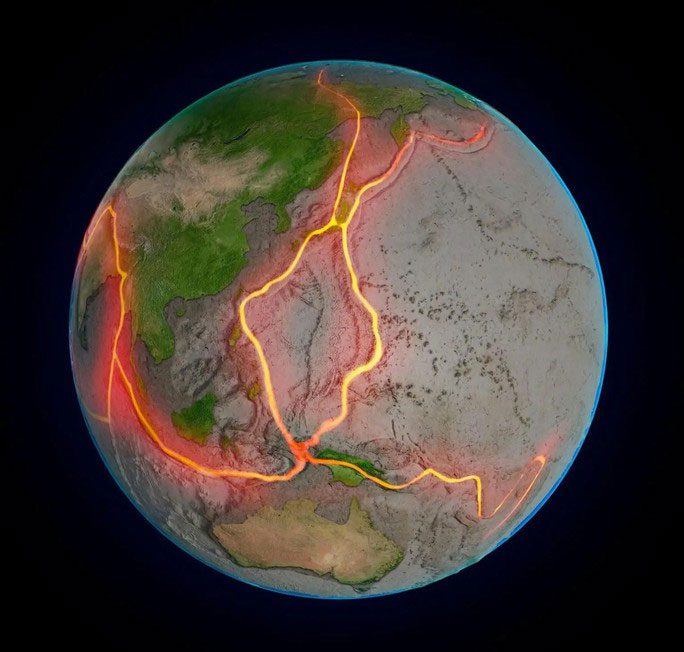Evidence of the Earth’s first “transformation” has just been revealed, which could lead to significant discoveries about how life began on our planet and on other planets as well.
In a study recently published in the journal Nature Communications, researchers from the University of Rochester (USA) utilized tiny zircon crystals to “unlock” information about magma and tectonic activity in early Earth.

Early Earth had tectonic activity – (Graphic from SCITECH DAILY)
Tectonic activity – a large-scale geological process in which pieces of the Earth’s crust continuously sink, rise, and slide against each other – brings essential elements from deep within to the Earth’s surface, controlling the planet’s water and carbon cycles, facilitating the emergence and preservation of life.
This process causes the planet’s surface to change continuously, with continents merging into one and then separating, and oceans undergoing similar transformations.
It also leaves traces through the way molten rocks turn into magma, mixing together. The chemical composition of magma can tell the detailed history of tectonic activity. Over time, they solidify into rock, containing tiny zircon crystals.
The oldest zircon crystals analyzed show an astonishing age, ranging from 3.8 to 4.2 billion years.
This indicates that tectonic activity on Earth began much earlier than previously thought. Therefore, the hypothesis that life could have emerged more than 4 billion years ago, as pointed out by some Australian scientists studying ancient rocks containing biological materials, is indeed grounded in evidence.
The way Earth began tectonic activity and the methods scientists are using to capture these ancient tectonic events also lays the groundwork for humanity to search for similar signs on other planets: If there is evidence of tectonics, there may be life.
Furthermore, this suggests that a planet can indeed give rise to life while still being a young, hot globe.
The research was conducted with funding from the National Science Foundation and NASA.


















































